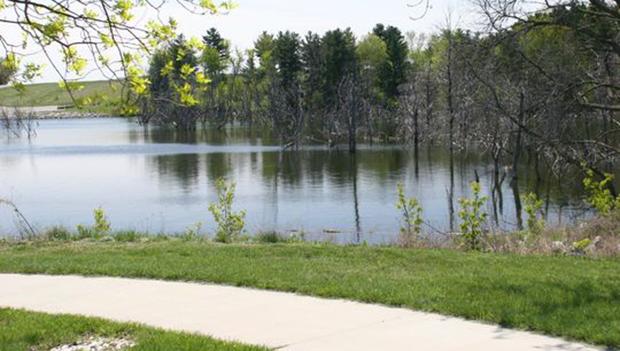
Summer is just around the corner, and who isn’t looking forward to longer days with more hours to hike? To keep you cool and safe during your summer hikes, we are sharing tips on what to wear for hiking in summer. We also have some examples of great places to hike and camp in the long, welcomed summer months.
Recommended: Get a deal on new summer gear
Stock up on your summer hiking clothes with our Apex Club. Your membership means up to 35% savings on all of the gear you need to have a fun, safe time on your next camping adventure.
Staying Cool
Choose summer hiking clothes that are a light color – like white, tan, and light blue – to reflect the sun’s rays off your body. Dark colors like black and navy blue will absorb the sun, making you feel hotter.
Also, loose-fitting, breathable clothing helps regulate your body temperature. Nylon and polyester are great fabrics in particular for keeping you cool. Finally, shirts and pants with vents will keep air flow moving close to your body, aiding in cooling you off. Choosing ventilated shirts with sleeves over tank tops will maximize sun protection and still provide air flow.
Check out this hiker-friendly camp spot:
You can also stay cool by hiking near a body of water, where you can jump in for a dip. For example, Brushy Creek State Recreation Area in Iowa has 35 miles of trails, many of which intersect the park’s large lake for a midsummer’s day plunge. There’s plenty of fishing in the lake too, as well as a shooting range, equestrian facilities, and playgrounds. Make it a camping trip with an overnight stay in one of 250 campsites.

Protecting Your Body
Your instinct may be to reach for a tank top or T-shirt and shorts when selecting summer hiking clothes, but covering up may be a better option, especially if you have fair or sensitive skin. A lightweight long-sleeved shirt and pants will offer stronger protection from the sun’s UV rays compared to bare skin with sunblock. Your ultimate in sun protection is an SPF-rated garment with 50 SPF or higher.
Another way to protect yourself from direct sunlight is by hiking in the shade. Look for hikes in shaded areas like the trail system that transverses forests.
Check out this shady hiking and camping spot:
Lake Norman State Park in North Carolina features a canopy that helps shield hikers from too much sun. You can also jump into the cool lake, fish, or spot a wide variety of wildlife. Stay a night or two in one of the nearly 60 campsites, including six cabins.

Recommended: 9 Mountain Peaks to Hike Before Summer Is Over
Shielding Your Face
Wearing a hat is a must in the summer hiking clothes department. Hats protect your face from the sun’s direct rays. A baseball cap provides basic sun protection to your forehead and portions of the sides and middle of your face. The ideal hat is a 360-degree, wide-brimmed hat that covers up your entire face and neck. If you do wear a baseball cap, you can extend its coverage by tucking a bandana in the back of the hat and letting it flow down over your ears and back of your neck.
Or, try beating the sun with a great evening hike in this area:
Planning on hiking in a place that can be extremely hot in the summer? Sometimes even the best hat won’t be enough protection. Instead, try an evening hike. Davis Mountains State Park in Texas has plenty of multi-use trails and great bird-watching opportunities as the sun descends. There are 100 campsites, including a few equestrian sites.

Recommended: 11 Great Summer Camping Getaways in the East
Don’t Forget Your Eyes!
A hat can help protect your eyes from direct sunlight, but plenty of harmful UVA and UVB rays will still enter your eyes. Plan on adding sunglasses with verified UV protection to your summer hiking clothes list. Sunglasses with broad spectrum UVA and UVB protection are worth their weight in gold in maintaining eye health for everyone, and especially for people with light-colored or sensitive eyes.
Note that stickers claiming a pair of sunglasses has UV protection may not be accurate. Many cheap sunglasses that can be purchased at places like gas stations or convenience stores have these UV stickers, but the glasses offer no real protection. In fact, these sunglasses are arguably worse than not wearing sunglasses at all. This is because they lack UV protection, but dilate your pupils, allowing more light to come into your eye, thanks to the shaded lenses. In other words, be sure you’re getting sunglasses with actual UV protection.
Remember, the sun’s rays are stronger at higher elevations. If you’re hiking at high elevation, especially at or above the tree line, maximum UV eye protection is a must on your summer hiking clothes packing list.
Try out some high-elevation hiking:
High elevation hiking can be found at Staunton State Park in Colorado. This is the newest state park in Colorado’s system and it’s remarkable for memorable mountain scenery, abundant wildlife, and great fishing. Make it a camping trip by staying in one of the hike-in only tent campsites.

Recommended: A Guide to Camping Shoes
Foot Care for the Win
The best socks for summer hiking, or hiking during any time of the year, are made of a synthetic material or wool. It may seem counterintuitive to wear wool socks during summertime, since wool is often associated with heat-retention, but wool is actually a tried-and-true hiking sock, favored for its moisture wicking, odor absorption, and skin protection abilities.
Wool socks come in a variety of weights, so choose a thinner or shorter pair for summer hiking. And be sure to get the right size. Socks that are too big can cause blisters from the excess material. Socks that are too small can slip and cause shoe rubbing.
Aside from wool socks, there are also many other modern materials that protect your feet from blisters and keep you feet as cool as possible for hot hiking days, such as socks from Cloudline, which you can get a discount on through the Apex Club deal.
Are you ready for your adventure? Plan your camping trip!